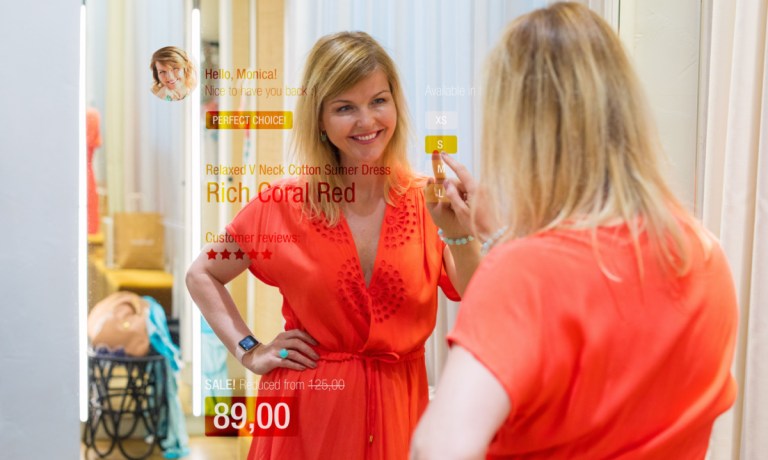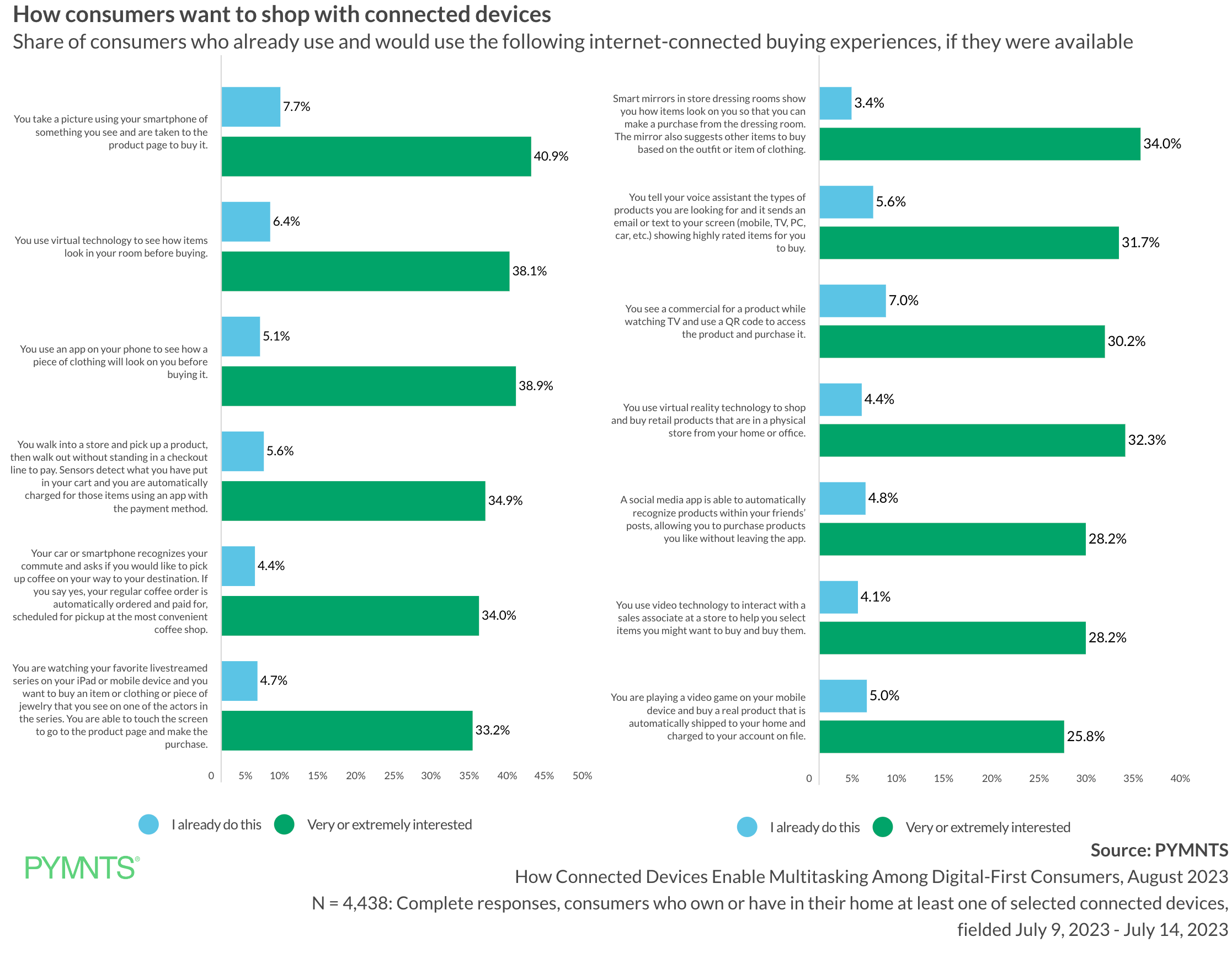Smart Mirrors Present Dressing-Room Commerce Opportunities for Retailers

Smart mirrors present an opportunity for retailers to embed shopping capabilities into the try-on process, PYMNTS Intelligence reveals.
By the Numbers
PYMNTS Intelligence’s report “How We Will Pay Report: How Connected Devices Enable Multitasking Among Digital-First Consumers” drew from a survey of more than 4,600 U.S. consumers to learn how they are using connected devices and apps to carry out a range of day-to-day tasks.
The results reveal that many consumers are open to new internet-connected buying opportunities. For instance, 34% of connected device owners said they would be “very or extremely interested” in an experience whereby smart mirrors in store dressing rooms show them how items look on them, so that they can make a purchase from the dressing room. Plus, the mirror also suggests other items to buy based on the outfit or item of clothing.
Additionally, 3.4% of connected device owners said they already use these.
The Data in Context
For years, retailers have been trying their hand with smart mirrors. In 2022, Amazon debuted a digital fitting room concept allowing shoppers with the Amazon app to “send items to a fitting room, where they can use a touchscreen to browse more options, rate items, and request more sizes or styles that are delivered directly to their room within minutes.”
Plus, even before the pandemic, brands such as Macy’s and Timberland were trying virtual-reality-equipped smart mirrors for everything from product testing to checkout, while clothing retailers including Tommy Hilfiger and The North Face were using headsets to provide 360-degree outdoor views in the middle of the mall.
Granted, consumers have mixed feelings about smart technologies. The “Consumer Interest in Artificial Intelligence” edition of the PYMNTS Intelligence “Consumer Inflation Sentiment” series found that 38% of consumers concerned about the impact of artificial intelligence (AI) on their work worry that AI would impair human contact, and 35% are concerned about becoming too dependent on technology.
